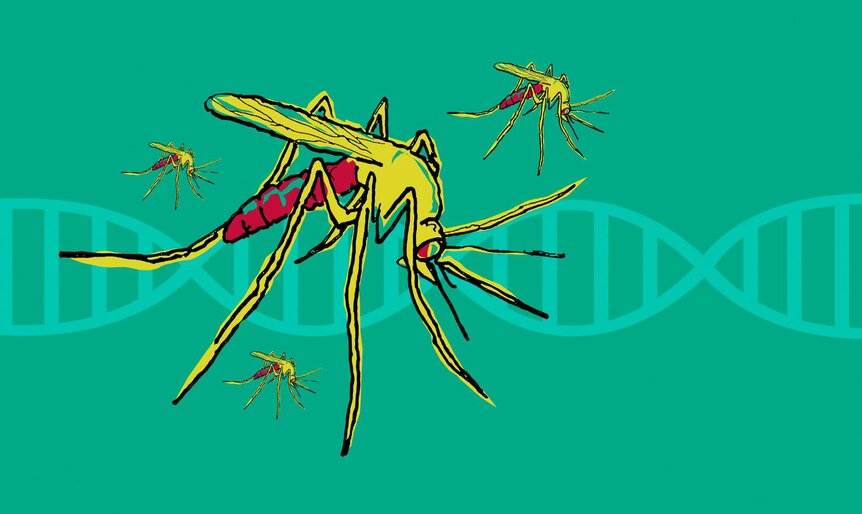Create a free profile to get unlimited access to exclusive videos, sweepstakes, and more!
Mansquito lives? Scientists unravel human DNA to imitate a mosquito's genomic structure

While it's not exactly the advent of human-insect hybrids buzzing about your summer picnics anytime soon, scientists have unveiled details regarding experiments that discovered a method by which human and mosquito DNA, both structured differently from each other, could be morphed into opposite arrangements.
Biologist Claire Hoencamp from the University of Amsterdam and Baylor University geneticist Olga Dudchenkoof, initially acting independently, identified two vital aspects about genomic structure.
First was the idea that a number of species, including mosquitoes, exhibited loosely folded chromosomes, and the DNA arrangement of other species such as humans were wound tightly. Second, they concluded that the protein known as condensin II was the culprit behind the differences in every case they investigated.
The pair's collaborative findings were published last week in the online journal Science.
By disabling the specific gene that generates condensin II, Hoencamp and Dudchenko managed to make human DNA reform itself to imitate mosquito chromosomes. This is a pioneering development that gains entryway into the more complex and perplexing mysteries of the evolution of life on our planet.
Hoencamp was able to trigger human DNA to unspool its tightly strung chromosomes and reshape itself into a pattern replicating the loosely-woven structure of mosquito DNA just by unplugging one single protein.
Over at Baylor's labs, Dudchenko quickly realized that essentially, every species on Earth can be placed in one of those two basic DNA architectures and many have jumped back and forth during their long evolutionary histories.
"In the human nucleus, the chromosomes are bunched into tidy packages," Hoencamp, a doctoral candidate in cancer biology at the University of Amsterdam, told Live Science. "But in the mosquito nucleus, the chromosomes are folded in the middle."
Dudchenko, a postdoctoral researcher at the Center for Genome Architecture at Baylor University in Texas, has been classifying genomes based on the 3D structures of their chromosomes form and her ongoing research for project DNA Zoo was revealing some obvious patterns in the two different styles.
Moving forward, both scientists' future research hopes to understand what evolutionary advantage one of these two nucleus structures could have when compared to the other. When examining gene expression, Hoencamp and Dudchanko observed that the folding structure of the chromosomes only slightly affected gene expression.
"Variations in 3D structure seem to be about fine-tuning some function inside organisms," Dudchenko added to Live Science, addressing the greater mystery they're eager to address with more penetrating study.




























